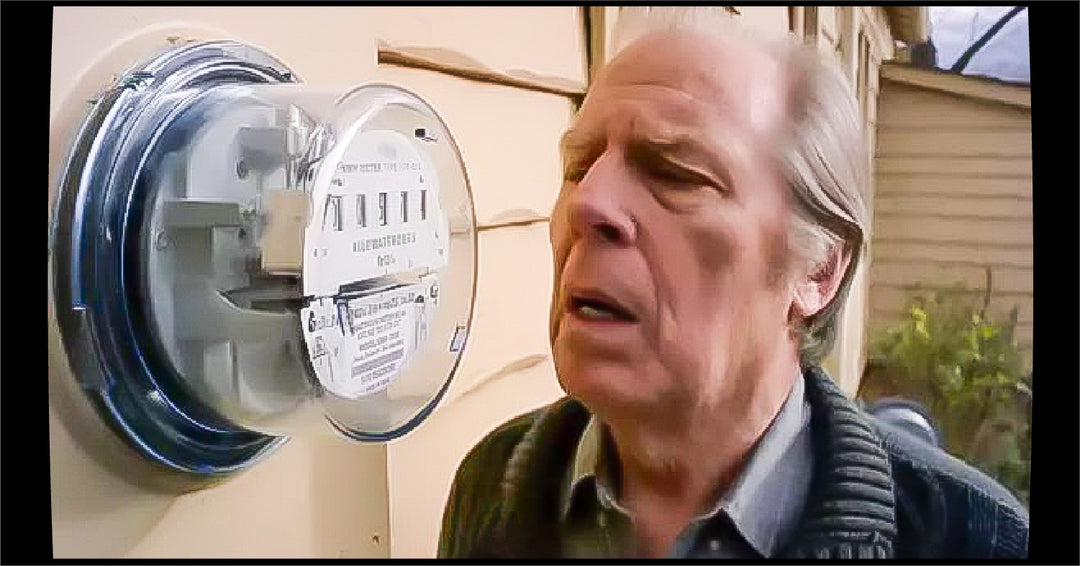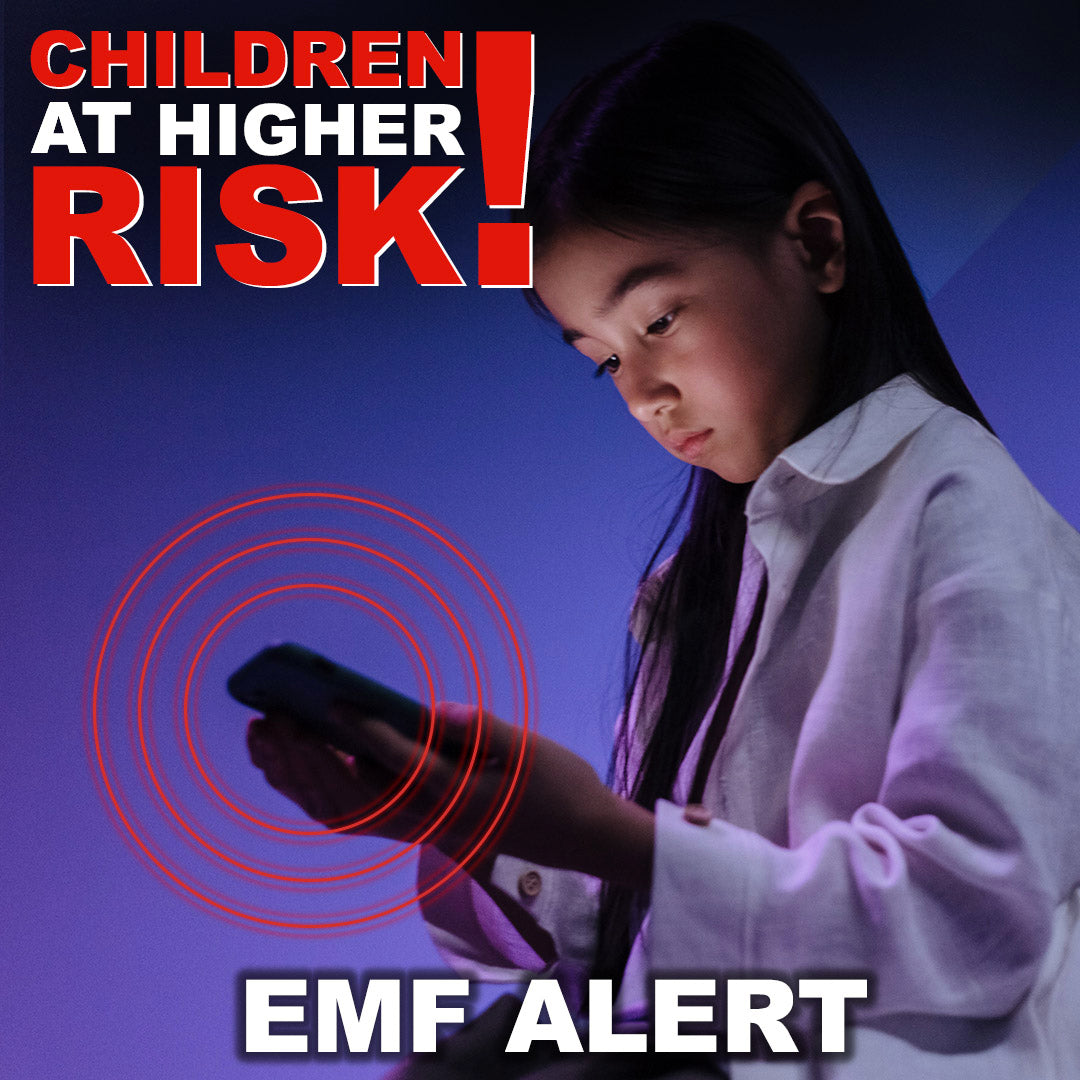5G: Risky Radiation?

Key Highlights
1. What is 5G?Ever wonder about the newest way to get online? T-Mobile’s 5G promises lightning-fast wireless internet, but what about the potential health impact? Let's dive in.
2. The Millimeter Wave Mystery:
5G uses millimeter-wave technology, a higher frequency compared to traditional Wi-Fi. While it offers wider coverage, concerns arise around electromagnetic field (EMF) radiation exposure.
3. Mitigating The Risks:
Experts recommend maintaining a safe distance from transmitters and exploring EMF shielding options. Staying informed about the latest research on EMF health effects is crucial.
4. Speed vs Safety:
The convenience of 5G technology, especially for underserved communities lacking affordable internet access, is undeniable. However, weighing the benefits of high-speed internet against potential health concerns requires a balanced approach.
The digital age is on fast forward, constantly reshaping how we connect, work, and navigate our lives. One of the latest innovations is wireless home internet from big players like T-Mobile, Verizon and AT&T. This technology promises to cut the cord – literally – by replacing traditional cable connections with a potentially faster and more convenient way to access the web. But is this a clear upgrade, or are there hidden implications to consider?
T-Mobile’s new home internet service promises lightning-fast speeds, but a potential storm cloud hangs overhead: concerns about electromagnetic fields (EMF) and potential health risks. In this blog, we'll take a deep dive into this wireless technology. We'll explore how T-Mobile’s offering works, delve into the science behind EMF worries, and discuss what's known about its potential health impact. We'll be approaching the topic with a critical eye, ensuring you have all the information to make an informed decision.
5G: The Latest Technology of Wireless Internet
T-Mobile dives into the world of 5G home internet, promising lightning-fast wireless access for homes and businesses. But before you ditch your cable and embrace this new technology, some potential drawbacks deserve consideration.While 5G home internet boasts features similar to cable TV – high speeds and a wireless connection – it relies on a fixed wireless infrastructure. This means data is transmitted via millimeter-wave technology (high-frequency 5G) from nearby towers to a device in your home, eliminating the need for physical cables or fiber-optic connections.
However, concerns remain regarding the potential health risks associated with long-term exposure to millimeter-wave radiation emitted by 5G towers. Studies warn us about the potential public health risks and the alarming effects on insect populations.
The Promise of 5G
1. Bridging the Digital Divide
For underserved communities, especially those currently relying on aging copper wireline networks with limited potential for fiber optic upgrades, 5G offers a chance to bridge the digital divide. This could mean new economic opportunities, improved access to education, and even telemedicine services for places like Native American reservations which often lack high-speed internet access. The expanded coverage and capacity of 5G could be a game-changer for these communities.
2. Faster Installation:
5G uses millimeter-wave technology, a higher frequency compared to traditional Wi-Fi. While it offers wider coverage, concerns arise around electromagnetic field (EMF) radiation exposure.
3. Competitive Pricing Strategy:
T-Mobile aims to offer competitive pricing for 5G internet, making it an attractive option for consumers seeking an affordable high-speed alternative with the benefit of unlimited data usage.
5G's EMF Concerns
T-Mobile's 5G home internet promises a revolution in wireless connectivity, but a shadow of concern looms large – potential health risks associated with electromagnetic field (EMF) radiation. Let's delve deeper.
EMF radiation is a form of non-ionizing energy emitted by various wireless technologies, including cell phones, Wi-Fi routers, and yes, even T-Mobile's 5G transmitters. Concerns about health effects already surround traditional Wi-Fi, which operates at sub-millimeter wave frequencies (2-6 GHz).
T-Mobile's 5G home internet utilizes higher frequency millimeter waves, bringing the source of this radiation closer to your living space. Unlike Wi-Fi routers that can be turned off, the constant presence of these signals are disturbingly concerning. Here are some key EMF concerns associated with 5G:
1. Increased Exposure:
Traditional Wi-Fi utilizes sub-millimeter waves, while T-Mobile's 5G home internet leverages higher frequency millimeter waves. This technology relies on transmitters potentially located closer to homes and businesses, raising concerns about increased long-term exposure to EMF radiation for residents and workers.
2. Potential Health Implications:
Studies exploring the health effects of EMF exposure have identified potential links between prolonged exposure and a range of serious health issues, including cancer, neurological disorders, and infertility. While definitive evidence is still being gathered, the growing body of research underscores the importance of taking these risks seriously.
Cutting The Cord? But, At What Cost?
The Allure of Wireless:
Unlike traditional wired connections, 5G operates on a completely wireless infrastructure. Data travels through the airwaves instead of relying on physical cables. Fixed wireless transmitters strategically placed throughout the coverage area establish connections with user devices, promising a convenient and cable-free experience.
The Familiar Wired Option:
For most homes and businesses, the current standard is a wired connection. Internet service providers (ISPs) typically install a modem or router that connects directly to the property. This wired connection serves as the backbone, and then data is wirelessly broadcasted within the premises using a local area network (LAN). Think of it as a central hub for your devices to connect to the internet.
The Trade-Off: Convenience vs. Potential Health Hazards
While wireless internet offers undeniable convenience, a key concern arises – exposure to electromagnetic field (EMF) radiation. T-Mobile's 5G home internet, by its very nature, exposes users to potentially higher levels of EMF radiation compared to traditional wired connections.
High Speeds & High Frequency:
Exploring the Spectrum of 5G
5G internet utilizes a new frontier in the wireless spectrum – millimeter waves. These frequencies operate at significantly higher ranges (typically 30 GHz to 300 GHz) compared to traditional Wi-Fi. This translates to a key benefit: faster data transmission. However, there's a catch – these high frequencies also have shorter signal ranges.
Most homes and businesses are familiar with traditional Wi-Fi networks, which typically operate in the 2.4 GHz and 5 or 6 GHz bands. These lower frequencies offer a clear advantage – longer signal range. However, this comes at the cost of potential interference and congestion, especially in densely populated areas, leading to slower speeds.
These higher frequencies of the new millimeter-wave technology translate to denser EMF radiation, potentially posing greater health risks compared to traditional Wi-Fi.
5G Coverage and Deployment
5G technology shines a light on underserved areas. For communities struggling with limited or expensive broadband infrastructure, 5G offers a faster deployment solution using fixed wireless transmitters. This could bring crucial internet access to those previously left behind.
Traditional Wi-Fi, typically confined to homes, businesses, and public hotspots, can't bridge the gap for entire unconnected communities.
While 5G promises to bridge the digital divide, concerns about health arise. Deploying these transmitters increases the density of EMF radiation, exposing a larger population to higher levels.
Speed Vs Risk
5G promises lightning-fast internet with potential upload speeds of 140 Mbps. Millimeter-wave tech keeps things smooth with low latency, offering a potentially more consistent in-home experience.
Traditional Wi-Fi can be unreliable, plagued by distance, interference, and multiple users.
5G boasts speed, but the potential health risks from increased EMF radiation demand careful consideration.
Affordability and 5G Access
T-Mobile aims to make 5G 'home internet’ accessible to a wider audience with competitive pricing. This could be a game-changer, particularly for underserved communities where traditional Wi-Fi options might be limited or expensive. Often requiring an ISP subscription and relying on existing fiber optic infrastructure, traditional Wi-Fi can be out of reach for some. 5G's potential affordability becomes even more attractive if you're already a T-Mobile customer.
However, affordability shouldn't overshadow potential health concerns. Underserved communities, already lacking access to resources, could be particularly vulnerable to potential health risks associated with increased EMF radiation exposure from 5G technology.
Mitigating the Risks: Precautions for 5G and EMF Radiation
Considering the worries associated with EMF radiation emitted by wireless technologies like 5G, it is essential to implement preventive measures to reduce possible risks.
1. Minimize Exposure:
Distance is your friend! Whenever possible, maintain a safe distance from 5G transmitters, particularly those installed in your neighbourhood. This includes avoiding close proximity during outdoor activities and advocating for transmitter placement that minimizes exposure to your living spaces, especially bedrooms.
2. Educate yourself:
Stay informed about the latest research on EMF exposure and potential health effects. Actively follow developments in the field and be willing to adapt your habits and precautions as new information emerges.
3. Use EMF Protection:
Safeguard yourself against electromagnetic radiation with Essential Energy's range of protection products. Whether it's your home, office, or farm, the Light Towers provides comprehensive EMF shielding to keep your space safe and secure. For on-the-go protection, the Essential Pendant offers personal defence against harmful electromagnetic radiation wherever you are.
Conclusion
T-Mobile's 5G home internet offers a glimpse into a future with faster internet speeds and wider accessibility, however, it's not without its concerns. The potential health risks associated with increased EMF radiation raise significant concerns.
A cautious approach is Essential.
Users, communities, and policymakers alike should carefully consider the potential downsides alongside the benefits. The key lies in striking a balance. We can strive to harness the power of technological innovation while prioritizing the safety and well-being of those using it.








Leave a comment